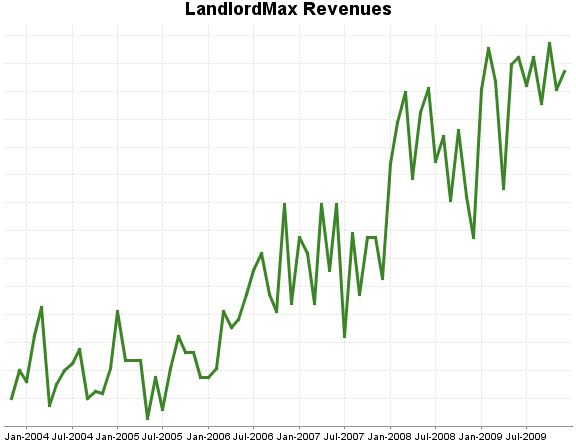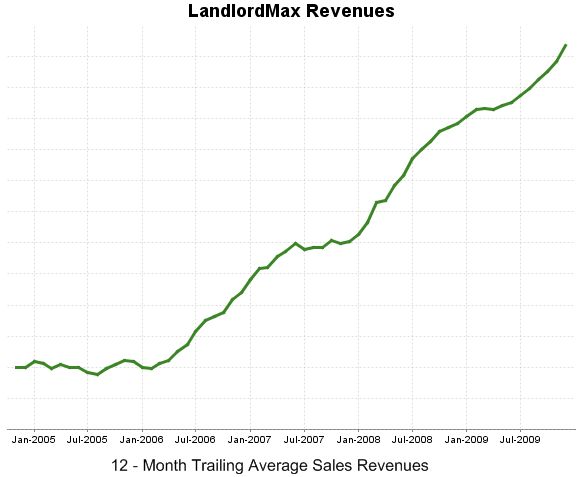Blog Blazer Fridays
Like I said I will start posting an interview a week from the book I published called Blog Blazers (seen above). However I decided to first have an introductory post today to give you a list of the bloggers that were interviewed (in alphabetical order as they are presented in the book). As well I thought it would be good form to add a link back to the introduction on every post for people who join later on as way for them to quickly catch up. This way they can have a starting point.
First the details for anyone interested in purchasing the printed book, you can buy it on Amazon here as well as a digital copy from the website here. The main difference is that you can click on the links in the digital book where as the printed book you have to type them in. Other than that the printed book and digital books are identical. In any case, I will be publishing all the interviews here so you can also just read them here and click on the links here. The printed book is really more for people like myself who prefer printed books, or the digital book for people who want everything together in one nice file for their iPad, Nexus, Kindle, and so on. Also please note that you can also subscribe to receive emails of the interviews by entering your email in the form in the top right corner or entering your email in the form on this page.
That being said, the book was published about 5 years ago, back in 2008. So over time some things have changed, but the interview questions were intentionally selected to be as timeless as was possible and while making it interesting and offering the reader a lot of actionable items. I also tried to ask everyone the same interview questions so that the book would make it easy to study how different people succeeding at blogging. You want to know the secret to blogging success, there is NO ONE SECRET! Different bloggers succeeded in very different ways. The biggest hurdles to blogging success are number one starting and number two stopping. There is no one single way to succeed or a single secret recipe for success. Different bloggers have succeeding in different ways using different techniques.
Back to the book, and before I go ahead and list the bloggers interview, if anyone wants to peek ahead and read the individual blogger’s bios, you can read their bios here. Warning of shameless plug: Also if you’re interested, you can find the reviews about the book here.
Now, as I was about to say before, deciding who to include in the book was very very hard. I wanted to not only include successful bloggers, but also up and coming bloggers, bloggers that weren’t mainstream yet. I wanted to include bloggers for different subjects and niches. There seems to be more technology related blogs than other niches. I also tried to include bloggers that I believed would be around for some time, at least 5-10 years. When it comes to blogging, most people are notorious for only blogging a short time, from a few months to maybe a year, so I wanted to avoid bloggers that were going to be gone shortly.
So without further ado, here is the list of bloggers interviewed in alphabetical order:
- Aaron Wall of SEOBook
- Abdylas Tynyshov of AdesBlog.com
- Al Carlton of Coolest Gadgets
- Alex Papadimoulis of The Daily WTF
- Andy Brice of Successful Software
- Anita Campbell of Small Business Trends
- Asha Dornfest of Parent Hacks
- Ben Casnocha of The Startup of You
- Benjamin Yoskovitz of Instigator Blog
- Bob Walsh of 47 Hats
- Dan Lyons of The Secret Diary of Steve Jobs
- Dane Carlso of Business Opportunities Weblog
- David Armano of Logic + Emotion
- David Seah of DavidSeah.com
- Dekek Semmler of Derek Semmler
- Dharmesh Shah of On Startups
- Erik Sink of Eric.Weblog()
- Ian Landsman of Ian Landsman
- James and Alex Turnbull of Google Sightings
- JD Roth of Get Rich Slowly
- Jeff Atwood of Coding Horror
- Jeff Clavier of Jeff Clavier’s Software Only
- Jennette Fulda of Pasta Queen
- Jennifer Perry of 101 Reasons I Hate Being Fat
- Jessamyn West of Librarian.net
- Joel Cheesman of Cheezhead
- Jonathan Snook of Snook.ca
- Manolo Blahnik of Manolo’s Shoe Blog
- Neil Patel of Quick Sprout
- Pamela Slim of Escape from Cubicle Nation
- Patrick McKenzie of Kalzumeus
- Penelop Trunk of Brazen Careerist
- Ramit Sethi of I Will Teach You To Be Rich
- Rob Walling of Software by Rob
- Rohit Bhargava from Influential Marketing Blog
- Seth Godin of Seth’s Blog
- Stephane Grenier (me) of FollowSteph
- Steve Rubel of Micro Persuasion
- Trent Hamm of The Simple Dollar
- Yaro Starak of Entrepreneur’s Journey
As you can see the list of bloggers interviewed is quite large and substantial. At the time some were just starting out and have now reached new heights of success!
I’ll be posting an interview a week for almost a year, for 40 weeks in all! It will be called Blog Blazer Friday.
Thankfully the vast majority of the bloggers I invited to be interviewed in the book have lasted the test of time, at least in blogging time (5-10 years). Almost all of the blogs are still alive, all but just 2 blogs!! The ones without the links are the two that are no longer online. A few more do have their blogs online but aren’t actively posting anymore. But overall the vast majority are still very active bloggers and have only grown more since the book was published! Overall I have to admit I’m pretty happy with the results 5 years later.
There’s definitely a lot of good information and details in the interviews and I hope you enjoy reading as much as I enjoyed compiling them.
Permalink to this article Discussions (1)
The Move to Aweber From Feedburner is Completed
As most of you realize, about two weeks ago I made the hard decision to move the email subscription list for this blog from Feedburner over to Aweber. I basically had come to the realization that Feedburner is coming to an end sooner than later, most likely sometime later this year to at most sometime next year. The signs are pretty obvious in my opinion. So as a result, rather than continue to build up the email subscriptions only to lose them later, I decided to take the hit and move to Aweber now.
I knew it was going to painful and I would lose many subscribers over in the transition based on what I read from many other bloggers. It was pretty clear the subscription count would drop significantly. There was no if, the only question was by how much?
Firstly, and this is the hardest to swallow, everyone you import over to Aweber basically has to re-subscribe (re-opt in but it’s really the same thing). To prevent spam, and thus to prevent people from importing random email addresses and email lists and causing harm to their service, Aweber require that every single person you import re-opt in. That is they will send out an email saying that if you wish to continue receiving emails, you have to once again click on the link to confirm your subscription. Not a big deal, but this does require an action from all your subscribers.
The problem here is twofold. Firstly many people are afraid of clicking on links they receive. When it comes to subscribing, they usually get it within a minute or so, so it’s very fresh in their minds. It’s an expected email and they’re ready to respond. However when it comes out of the blue, even if you announce it in a previous communication, it’s still not as expected, so a lot of people will be reluctant and just not click. It’s unfortunate but that’s reality.
Also, and this is again another reality of our world today, asking people to perform any additional steps is enough to lose a certain percentage. Yes they may still be interested in your articles, but any additional work will cause a drop of some people. Just like adding an extra field in your purchase is likely to lower your sales conversions, asking to re-opt in will unfortunately drop some people.
And of course, and this is probably a good thing, over time some email addresses will no longer be valid. For example I still had many hotmail.com email addresses which Microsoft have since converted over to outlook.com. So for some people they may just have re-subscribed with another email address. Others just missed the opportunity. Similarly others may have used their work email address and are no longer employed at the same place so the email address is still in the list but is no longer active. Basically a bunch of little reasons for why some subscribers are no longer valid. So all list naturally need some pruning over time. It’s just psychologically tougher to do at the same time as everything else even if you know why.
With that in mind, the last blog post I wrote here was to let people know what I was doing, so that they weren’t as big a surprise when they received the email to re-opt in. Basically a friendly notice. And since then I decided to wait at least a week to give as many people as possible a chance to re-opt in before posting again so they wouldn’t miss anything. So yes although I was planning on writing more often, I held back to give the transition a little bit of additional time.
So what was the end result? Well firstly I’m happy and relieved it’s done. I’ve been wanting to do this for at least the last 2-3 years. I don’t know why I held off so long, probably it just didn’t seem as important. That and I didn’t want to lose any subscribers along the way. In any case it’s now done and as a result I can breathe more freely. And most importantly I can feel more comfortable that any efforts I spend on growing the list are not going to be lost in the future.
And now for some metrics. Well right off the bat 26.6% of the emails bounced when sending out the re-opt in email. So yes although that stung, that’s actually a good thing. It’s the pruning I just talked about. S4o basically 26.6% of the email subscribers over the years are no longer active. So this is a good purge. No point in sending out emails to people whose email addresses are no longer valid.
After that, in terms of re-opt ins, well let’s just say that quite a good number of subscribers were lost. I expected it, and it was definitely within the norm from what I read online from other bloggers who did the same thing. Everywhere you read about it, people say do it sooner than later because the cost of transitioning is painful. After this experience I completely agree. Do it sooner than later. It’s not fun so if you’re going to do it, do it sooner rather than later. It’s better to keep the number of lost subscribers in absolute numbers lower because the percentage will most likely be about the same. In other say losing 10% of 10 is much better than losing 10% of 1 billion in absolute numbers. That being said, I’m finding a week later previous subscribers are still in the process of re-opting in, so I don’t yet know what the final percentages will be.
On a positive note I’ve absorbed the cost so that’s now done. And although I lost some subscribers, quite a lot did transition over which is great! Above that, all the RSS feed subscribers are still there, they haven’t changed in numbers at all according to Feedburner (I left Feedburner for the RSS feed for now since there’s no reason not to – there’s no penalty if they go away and I transition that later).
What’s also good is that I already have quite a large blog with almost 500 posts written over 8 years so that will definitely help me re-grow it back to the same level of subscribers pretty quickly. My guess is that I’ll be back to this same levels within 3-6 months, so that’s about the cost for moving if you’re curious. Which like I said before, if you research it, that’s actually pretty good.
I believe this is also the very first time ever that FollowSteph has had less email newsletter subscribers than my company LandlordMax Property Management Software email newsletter! By the way the company email newsletter is also managed by Aweber and has been for at least a year now. In any case I don’t expect that to last very long, usually blogs get more subscribers than company newsletters, regardless of how good they are. What’s nice though is to see both of them growing on a daily basis!!
And on that note, I welcome back everyone who has transitioned! I also look forward to posting quite a lot starting now. And later this week, I will start to post one interview a week from my book Blog Blazers which you can find on Amazon here. The list of bloggers I interviewed can be found here (and I will be posting in the order of the book). So it should be quite a lot of fun. There’s lots of great interviews in the book.
Until then, here’s goes to the first post using Aweber!
Permalink to this article Discussions (0)
Are Shorter Headlines Always Better?
It’s generally assumed that shorter headlines are better. Not just a little bit better but significantly better. The reality is that it’s necessarily not true. Shorter headlines are indeed better, but just marginally better. The difference between a 3 word headline and a 13+ word headline is not even 10%!!
A study of 2500 ads done in 1939-1940 by Harold J. Rudolph through the Saturday Evening Post found that the content of the headline is the major element that determines the effectiveness of a headline, not it’s length as is generally assumed. The table below shows the difference in the number of people who read the headline based on the number of words in the headline:
.
| Number of Words in Headline | Percentage of People who Read the Headline |
|---|---|
| Up to 3 | 87.3% |
| 4-6 | 86.3% |
| 7-9 | 84% |
| 10-12 | 82.5% |
| 13+ | 77.9% |
Therefore what we should learn from this is that if you have to add extra words, do so as long as it makes your ad more effective. A shorter headline with poorly chosen words is not as good as a longer headline with well chosen words. After all the difference in effectiveness isn’t even a full 10%. It’s definitely not as much as we’re generally lead to believe.
Permalink to this article Discussions (2)
Taking Summer Holidays from Blogging

For the first time since I started this blog 5 years ago, I’m going to take a summer off. You may have already noticed that I’ve started my holidays, it’s been almost a month since I last posted. I initially thought I would just quietly take a few weeks off, but now that it’s already been a month, I think I’m going to take the whole summer off. After five years, it’s been a nice break that I needed to refresh my creativity.
While I’m gone, please feel free to write comments on post to let me know what you’d like me to cover when I come back. I know what I want to write to about, but if there’s anything you guys want to me to write more about than I do now, please let me know.
And on that note, see you back here in about another month. Have a good summer!!
Permalink to this article Discussions (1)
A Failed Experiment – And why It's Important to Measure Everything

For some time now I’ve been considering having a weekly post where all I’d do is list interesting blog posts, articles, news, etc. that I found online over the week. In late April I decided to go for it, and so was born the Lazy Friday Reading Assignments. These posts consisted each of a list of links with information around each link explaining why that link was interesting.
In terms of results, I mostly expected that these posts would have much higher clickthroughs than normal (because it’s a list of links to check out). I also thought that the overall traffic, and the subscriptions (Google Feedburner count), to the blog would continue it’s normal growth. And if I was lucky, other sites would learn about this blog and hopefully send additional new traffic.
The results were not what I expected! And this is why it’s important to measure everything.
In the graph above, the blue line represents “Reach”, or as Google defines it, the number of people who have taken action on your content. I had 4 Lazy Friday Reading Assignments on the graph, and all 4 resulted in higher clickthrough days. There are actually about 8 posts in the timeframe of the graph, with the last post being on May 21st (I’ve been too busy over the last while to post). In any case, the end of the graph is the baseline with no posts (about 2+ weeks since my last post), the lower levels of the blue line on the left side are the baseline for normal posts, and the higher numbers are the Lazy Friday Reading Assignment post days. Exactly as I would expect them to be!
The traffic, as measured by unique visitors, did increase over this time, but not much more than my normal growth levels (it’s not displayed on the above graph, I measure unique visitors through other sources). This is more or less what I expected.
But, and this is a big but, the subscription count as measured by Google Feedburner (the green line), was not at all what I expected! Looking again at the graph above, you’ll see that while I was publishing the Lazy Friday Reading Assignments, the green line has dips and overall didn’t really increase. Although the dips don’t exactly correlate to the Lazy Friday Reading Assignment days, I can assure you it’s the first time I’ve ever seen this behavior (there’s also some delays with when Google Feedburner sends out the newsletter by email for those that subscribed by email). Normally when I write a post I’ll see an increase in subscription count on those days (the reverse). I would’ve included an example, but I wasn’t able to find a way to generate a graph from Feedburner for a specific date other than the last 30 days (the full length is too massive).
Although those dips may not look too big, they do represent a decrease of several hundred subscribers. This is significant enough! And more importantly, it’s consistent. During the experiment the subscription rate had absolutely no growth. There’s been more subscription growth with me doing nothing for 2 weeks after the experiment than during the whole month of the experiment!
In other words the experiment was a failure. Therefore the Lazy Friday Reading Assignment is no longer. Although I thought it was a good idea, this didn’t turn out to be the case. Which is why it’s a good idea to measure what you’re doing. Had I not had these metrics, I may have continued for a long time before realizing my error.
Which is why it’s important to measure, measure, and measure again.
PS: Looking at the graph also reminds me I should be posting more consistently.
Permalink to this article Discussions (2)
2009 – A Year in Retrospect

2009 has been my busiest year to date since I’ve started blogging almost 4 and a half years ago and founded LandlordMax 6 years ago! Looking back, it’s hard to believe everything that’s happened. Which is why I’m going to take a breather today and look back at 2009, to share with you all that’s happened. Every once in a while I like to do that, and it’s been way too long since the last time.
When 2009 started, LandlordMax (the property management software company I founded) was growing at a very nice pace and the real estate market hadn’t collapsed as far as it has today. We were in the process of trying to release our biggest ugprade, version 6.05. We were also trying to get a Mac version out in the first half of the year, and hopefully get much further on the networked multi-user version. I had also just published my book Blog Blazers (November 2008) in which I had interviewed 40 top bloggers about their take on blogging. Above that I was in the process of a major redesign of this blog. Those were the major items on my plate as 2009 started.
Overall it mostly went as planned, with some surprises and exceptions. The biggest unexpected was just how much work it was going to take to make it all happen. If I had known ahead of time just how busy 2009 was going to be, I probably would’ve been a lot more stressed. Sometimes ignorance is best. In any case, here is my journey broken down into sections:
LandlordMax
Just to quickly re-iterate, LandlordMax is the company I founded about 6 years ago. The company primarily builds and sells property management software to real estate investors, property management companies, property managers, banks, colleges, and anyone else who needs to manage rental properties. The software manages the accounting, workorders, invoices, leases, tenants, buildings, and about a million other things. It’s a very useful and powerful piece of software.
When 2009 started, we were very actively working on a major upgrade of LandlordMax, which eventually was released as version 6.05 in May 2009. In it we included many new features, including a large amount of charting, email integration, Outlook support, whole new sections (accounts, contacts beyond tenants, vendors, etc.), over 20 new reports to the already more than 100 reports, and lots of other exciting new features. It was a massive undertaking that although started long before the year began, was finished before the year ended.
The only downside is that we couldn’t offer all the features we had wanted to and release it within a reasonable time. For example, we wanted to offer a feature we called “Archiving”, but as we tried to implement it, I realized it was going to be a major undertaking, taking more time than I wanted to get this version completed.
We also tried to get check printing into the software but had I to make the very hard decision to push it to a future release. After having committed a lot of time and money to check printing, it became clear that it wasn’t going to be doable within the time frame we had. So for now, this is a feature that has been put on hold. I hate to see all that effort put on hold, especially after having already invested so much effort and time, but it was the right decision. It was the hardest decision I that I had to make in 2009.
That being said, LandlordMax version 6.05 was very successfully released in May 2009. The feedback and comments we received have been amazing. Here’s just a few samples of the latest testimonials: 1, 2, 3. And those are just the ones I’ve published here on my blog, there’s many more on the LandlordMax Success Stories page.
Within days of version 6.05 being released, a big push went forward to make it available on the Mac. We’ve been working on this on and off for some time, going as far back as 2007. The problem with the Mac version is that there’s always tons of small and extremely annoying differences that need to be correctly handled. Things from how the installer works to how the program is rendered on the Mac. But this year I decided we had to make it happen no matter what. What I initially thought was going to be a certain amount of worked turned out to be a lot more than I had planned. And I mean a lot more! On the scale of 3-5 times more work!
Back in August 2009, I was already mentioning here how the Mac version was going to be coming very soon. That we only had one issue remaining. How wrong I was! A month later, in September I wrote about it again saying how wrong I was in my last post. We had resolved it, but now there were other issues.
One issue that was particularly troubling was due to the fact that LandlordMax is built on the Java platform. On the Mac, Leopard uses Java 5, and Snow Leopard uses Java 6. There is no overlap, and you can’t choose one version or the other, they each use a different version. Which means to support Leopard and Snow Leopard we needed to make LandlordMax fully Java 6 AND Java 5 compliant!! We’d been planning to upgrade to Java 6, but we were hoping to push that off until after the Mac version was released. Turns out we had to deal with it now.
At the end of October, we finally released the Mac version of LandlordMax! And it was compatible for all versions of the Mac OS, Leopard and Snow Leopard. Not only that, but you could take a backed up database file from the Windows version and move it to the Mac, and vice versa. In other words, you could use LandlordMax interchangeably on the Mac and Windows!
The Mac version of LandlordMax has since been received with lots of enthusiasm as shown in this initial testimonial, with many more to come. But in terms of estimated cost, we spent several times more than I had initially planned. And this is after having already committed lot of resources in the past.
During all this, the property management software market has dramatically changed. A company that’s been buying up many of our competitors over the last couple of years in the hopes of becoming a major player, Domin-8, has filed for chapter 11 bankruptcy. They acquired companies such as Rent Right, Spectra, Tenant Pro, iCam, Management Plus, and so on. This is big news because most companies have very limited success after filing for Chapter 11. Not only this, but we’re already starting to see people jumping ship as they’re learning the news. No one wants to be stuck with a software from a company that’s no longer around, especially with the speed of technology today. Which means 2010 may be a very interesting year for the property management software market. A shakeout year…
And as you all know by now, the real estate market has also been going through a major recession! You would expect our sales to be impacted negatively, but quite the contrary has been going on! Our revenue growth hasn’t stopped in the slightest, we’re still growing at the same fast rate as before as shown below (the graphs below only include sales of LandlordMax):


All in all, it’s been a great year for LandlordMax. Things have definitely been going in our favor. The only thing we haven’t yet succeeded in doing is releasing the networked version. A lot of work has already been done here, but the progress has been slower than I’d have liked. Not because it’s hard or a lot of work, which it is, but because I’m always having to allocate effort away from it to other more immediate items. For example, to get LandlordMax version 6.05 out on time, we had to pause the effort on the network version for several months. And for the Mac version, well let’s just say that all the effort was focused on the Mac version during those months. Like I said before, the Mac version required much more work than anticipated and I made the commitment to follow it through, even at the cost of delaying other items.
Which means that this year, we’re now working very hard on the network version. I expect there will be a new version of LandlordMax before the networked version is available, but I can’t confirm this. I also believe it won’t be until at least late in the year that the networked version will be available, if not in 2011. Above this, the website is in the process of going through a major uplift! That’s what’s going on right now. We’ll see what happens. I can’t wait to write a similar post when 2011 comes on what happened this year!
Blog Blazers
In November of 2008, I published the book Blog Blazers. In Blog Blazers, (also available on Amazon), I interviewed 40 top bloggers, (bios can be found here). The book took me a good year to publish and I’m very proud of the results. In it I asked everyone the same questions so that you the reader can compare apples to apples and oranges to oranges. Not only that, but one of my goals was to make sure the questions had a lot of follow-up material so that you could continue learning after you were done reading the book. Questions such as What was your most successful blog post ever? Which books and websites do you recommend to new bloggers? What’s your best tip for writing a successful blog post? To name just a few. I even wrote some follow up posts to help people find further resources such as 10 Most Popular Books in Blog Blazers.
Because the book was released in mid-November, it was just in time for the Xmas rush. And of course, because it’s a new book from a new company (Levac Publishing House – owned and operated by yours truly), there were some initial distribution issues. For example, Amazon will only initially order a limited number of books for new books and from new publishers. And because of this, Blog Blazers was almost immediately out of stock on Amazon. The good thing is that although it took alittle bit of time, we were able to resolve the issue quickly enough. And of course, it’s a good problem to have!
Other than that small initial glitch, Blog Blazers as a whole has been a pretty smooth ride. Most of the issues with the book were in it’s production, the marketing and sales was fairly similar to LandlordMax. Actually, I learned so much from the production side that I ended up writing a 3 part series on how to publish a book. Here is the link to the series: Part 1, Part 2, Part 3.
The biggest thing I learned about publishing books is that profits can only really be made by selling books in large volumes. You have to move at least 10,000-100,000 books to make any kind of money. Less than that and I’m at a loss how you can make any profit (assuming you have a marketing budget). The profit margins are definitely lower than I expected. To be honest, I really did learn a lot more than I ever expected about the book publishing industry. I now have a very big appreciation for the effort that goes into making a good book, and just how hard it is to produce and succeed. I now thing that books in general are under-priced. That being said, lots of copies of Blog Blazers were moved. Right now there’s just a fraction of what I initially printed left before I need to make a decision on the next print run. So that’s pretty exciting.
In regards to how the book has been received, it’s gotten a ton of glowing reviews. It’s been reviewed on major websites, blogs, magazines. It’s landed me several interviews, podcasts, radio spots, video reviews, guest appearances, etc. It’s been used used for a workshop at Drake University. What’s also very excited is that on Amazon, a site known for it’s reviews, Blog Blazers has gotten an average 4.5 star out of 5 stars! Almost no books get 5 star reviews, it’s extremely rare. Most books get anywhere from 3 to 4 stars. 4.5 stars is exceptional!
As the year has been wrapping up, I’ve had to decrease my marketing efforts. Right now the book is mainly selling itself through word of mouth. I might put another big marketing push or two, but I don’t expect to put as big a marketing push as I did in 2009. It’s a lot of work and because of that I believe it took a lot of my time away from LandlordMax. It was ok for 2009, but I can’t commit as much time to promoting Blog Blazers in 2010 as I did in 2009, not with everything coming down the pipe for LandlordMax.
Overall though, Blog Blazers was a success which I’m very proud of it. The only thing is that in retrospect had I known beforehand what it takes to publish a book I doubt I would have done it. The last time I had calculated, I put 1000-2000 hours into publishing the book. That’s just my time! This doesn’t include the money I invested. It’s definitely a costly endeavour. So if you’re planning to write a book, you should really check out my book publishing series I wrote on my blog (mentioned earlier). It’s a BIG project! Not that there’s anything wrong with it, it’s just nice to know what you’re signing up for before you actually do sign up.
FollowSteph
As always, in 2009 I continued to write articles/posts here. The biggest workload came from a complete custom re-design of the site. And I have to give credit to Reuben Whitehouse for it’s success. He designed the new logo, as well as the whole look and feel. If you’re interested, Reuben wrote a blog post about how he designed and came up with the FollowSteph.com logo. It’s a pretty cool post with lots of pictures and explanations on how he did it.
The other big news for FollowSteph is that the Feedburner subscriber count, which I don’t publicly post yet, has been climbing fast. In 2009, the blog grew in subscriptions by 500%!! I can’t even begin to describe how exciting that is!! Normally I’d see a 50% to 100% yearly growth, never 500% times. 2009 was a big year. Very exciting stuff!
For 2010, my main goal is to increase my blog postings, bring it back to my pre-2009 levels. 2009 was just so insane that I have to admit I didn’t post as much as I use to. Especially the last few months of 2009. In November and December I only had 2 posts each. My goal is to get back to my usual posting schedule of at least once a week, preferably more if time permits. It’s definitely not a lack of ideas and things to say, it’s a lack of time.
RealEstatePigeon.com
RealEstatePigeon.com is a completely new website/project sponsored by LandlordMax! I’ve never once talked about it. This is the very first time right now!
RealEstatePigeon.com is expected to be publicly released later this week or early next week. You’re more than welcome to check it out now, just be aware that we’re putting on the final touches as we speak. There are a few outstanding graphical issues. That and I’m in the process of seeding it a bit more before fully going public with it.
What is RealEstatePigeon.com? It’s a Q&A (Questions and Answers) website about real estate. The website is based on the success of StackOverFlow.com, a Q&A website for programmers. The idea is that you’ll be able to ask real estate related questions and get answers. Not only that, but because it’s a community website, you can also show off your real estate knowledge and answer questions posed by others.
The differentiator here is that unlike discussion forums where the answers are all listed in chronological order which makes you have to read everything just to get any idea of what’s going on, you’ll be able to quickly see the best answers. This will work because all the answers get voted on, and the best answers will get pushed up to the top based on the number of votes. So the better an answer is, the higher it goes and the quicker you can get to it.
Not only that, but the website is going to have a reputation based system. What this means is that you receive reputation points for each of your questions and answers that are up voted. The more reputation points you get, the more real reputation and credibility you get. And the more real reputation you have, the more real opportunities you’ll get offline, in the real world.
For example, on StackOverFlow people have gotten such high reputation scores that it’s attracted the attention of people looking to hire experts. Yes, opportunities are being presented to people directly because of their reputation scores! People are getting contracts because of their reputation scores. People are getting hired for work because of their reputation scores. Basically, people with high reputation scores are attracting the attention of others who want to work with them.
Therefore the goal of RealEstatePigeon.com is that not only will you get answers to your real estate questions, but you’ll will be able help others (and as a side effect show off your knowledge). And in return for helping others, you’ll be able to potentially achieve success yourself! Who wouldn’t want to work with a mortgage broker who had a high reputation score. What about a knowledgeable real estate agent? When you approach an investor for money, wouldn’t it be great to be able to show them how much you know and your reputation score? Even better, I can’t wait to hear from the first person who tells me they got approached by investors instead of them having to approach investors because of their reputation on RealEstatePigeon.com!! That’s the ideal goal! To get people come to you rather than you going to them!

2010
To summarize, in 2010 I plan to:
- Continue to grow LandlordMax
- Release at least one new major version of LandlordMax
- Get very close to releasing a networked and multi-user version of LandlordMax
- Finish the major uplift of the LandlordMax website
- Sell out all the remainder copies of Blog Blazers’ first print run
- More than double the number of subscribers to this blog
- Bring back to the posting frequency to pre late 2009
- Launch RealEstatePigeon.com with success
- And have a lot fun doing all of the above!!
Let’s see what happens.
Permalink to this article Discussions (4)
It's Only the Flu…

“Those who cannot learn from history are doomed to repeat it.”
– George Santayana
Why is there such a big push for the H1N1 vaccine right now? Why did the United-States declare a state of Emergency for the H1N1 virus? Why has the WHO (World Health Organization) been so public about escalating the H1N1 virus to a “pandemic”?
It’s because we’re learning from our past. Well hopefully we’re learning. Back in 1918 people were too slow to react to the biggest Pandemic in recorded history. And when they did react, it was either too late or too slow. The time to react is not once we’re in the midst of a full virulent pandemic storm. Rather the time to react is before it becomes virulent. Even with today’s modern medicine we still can’t cure the Influenza (Tamiflu isn’t really a cure). All we can do is prevent it and treat the symptoms.
Back in 1918, before it really struck at full force, people just kept saying it was “only just the flu”. Nothing to worry about. It’s just another cold. Yes, initially it was, but that quickly changed. And even then, many people still kept saying it was only just a flu. It wasn’t until people started dying, and even then it wasn’t for some time, that the population really started to react.
If you don’t know the history of the 1918 Influenza Pandemic, I strongly recommend the book The Great Influenza – The Story of the Deadliest Pandemic in History by John M. Barry. It’s an amazing read! The information and knowledge in the book is priceless! Not only does he follow you through the history of the pandemic, Barry also explains how influenza works and why we still need to be just as vigilant today.
The 1918 pandemic is chillingly similar to today’s pandemic. Firstly, the 1918 Influenza was an H1N1 Influenza virus, unlike the Avian Flu’s H5N1 makeup. If you’re not familiar, Influenza can come in a number of forms, H1N1 being one, H5N1 being another, and so on. Each form is different enough that if you have immunity to one it doesn’t give you immunity to another (so for example being immune to H1N1 doesn’t give you immunity to H5N1). This is why there are seasonal vaccines, there are just too many possible forms. As well, to make things more complicated, the Influenza virus can be different enough within one form to only offer partial immunity to that form (and in some cases none at all). It’s almost like variations within forms!
But getting back to the 1918 pandemic, it too started with an initial mild first wave. It’s the second wave that brought death and carnage to the world. The second wave was of the same form but much more virulent. So virulent in fact that in the most severe cases it killed within hours of when people showed the first signs of symptoms much like the death this week of the 13 year boy in Toronto who died of H1N1 with 48 hours of showing symptoms. Statistically, the 1918 flu killed anywhere from 2-20% of those infected as opposed to the normal rate of 0.1%! The good news is that in most cases it just made you really sick, but please don’t confuse that with how many people it killed. It killed complete families. It devastated whole communities. Governments in the US collapsed. Cities collapsed (Philadelphia, etc.). Booming cities became ghost towns. In terms of scale, it’s estimated to have killed over 100 million people. In today’s numbers that would be over half a billion people!
This is also incidentally why the WHO, and governments around the world, are pushing so hard for everyone to get vaccinated as soon as possible. We want to stop it dead it in it’s tracks, to prevent it from mutating into a much more virulent form. We don’t want to give it that chance. Not only that, we know that the H1N1 has the potential for being a real killer!
The similarities don’t just stop there, the H1N1 from 1918 was much more virulent to the healthy young people than to the young and elderly. Sadly, hundreds of thousands of children were left without parents after the virus had finished it’s run. Not something you normally see from the seasonal flu.
The reason it can be so deadly in young healthy people is because they are so healthy. It’s not actually the virus that kills them in many cases, it’s their own body. Rather than just sending in special soldiers and snipers from your immune system to attack the virus, it has to send in it’s full arsenal. Now in many cases, it’s not a big issue, but if the virus fights is strong, your body reacts accordingly (not exactly but close enough). So what happens is that you get your own personal World War 3 waged in your body. In most cases your body will win, but have you ever seen a battlefield after a big war? There’s not much of it left. In this case, the battlefield IS your body, specifically your lungs, so there’s not much left. This is called a Cytokine Storm.
This is often what causes you to die. And you’re lucky enough to survive the onslaught of the battle, your lungs are so beat up that they get secondary infections such as pneumonia, bronchitis, etc. In 1918 they didn’t know what to call this. Today we call it ARDS (Acute Respitory Distress Syndrome). If you get ARDS, your chances of survival are low. In 1918 you had a 10% chance of surviving. Today I believe it’s now up to a 50% chance of surviving. Better but not great. Incidentally, this is why SARS was so scary.
Just how fast can it happen? Here’s a story from the book The Great Influenza: “In Cape Town, South Africa, Charles Lewis boarded a streetcar for a three-mile trip home when the conductor collapsed, dead. In the next three miles six people aboard the streetcar died including the driver. Lewis stepped off the streetcar and walked home”.
Yes today we have better treatment for secondary infections such as antibiotics, but we definitely don’t have enough supply for a major pandemic. It’s believed that the world supply of antibiotics would be depleted early on in a significant pandemic, and manufacturers wouldn’t be able to keep up with demand. That’s part of the cost/benefit of our society’s “Just in Time” inventory. It helps reduce costs and wastage, but we don’t have much backlog. Again, we still have no cure for Influenza itself, all we have is medicine (antibiotics) to treat secondary infections.
Which is why we need to get the people who will be most sick (or most likely to pass it to others) vaccinated first. Not just because they’re more likely to suffer and die, but also because we want to be careful not to overwhelm our already over stretched medical system. In most places in North America, the medical system is already running at more than 100% capacity. That’s right, more than 100% capacity!
If you compare the medical system today to the 1918 medical system, they may have been better prepared. The hospitals back then were running well below 100%. In 1918 the bed per capita (ie number of beds for a given number of people) was much much better than it today. Even with this extra supply of bed and staff, you hear many stories from survivors who while in the hospital never saw a doctor. In some places people couldn’t get beds, even with bribes. People would lie on the floors waiting for others to die so that they could take their beds. It wasn’t pretty. And that’s with a bigger padding than today. It’s not about the quality of care, or what treatments are available, but just about being able to see a doctor!
It’s believed that our current medical system can’t even handle the extra surge from a mild pandemic! Never mind a virulent one. We just don’t have the resources for the surge in capacity. It looks like our hypothesis is about to be tested, and it’s already proving to be accurate. We are ONLY in a MILD Pandemic right now. Hopefully that’s all it will be.

The good news is that we have much better communications today. The fact that Barack Obama has already declared a state of emergency for the United States is phenomenal!! In 1918 it was hushed for as long as possible. Declaring a state of emergency early means we’re already starting to allocate resources before it’s a massive problem. It means we’re trying to prevent it rather than react. Not only that, but making people aware is a good thing. There may be some fear and panic right now, but compared to what happened in 1918, it’s way better.
In 1918 because they tried to hide the spread of the virus (it was during World War 1 and they were trying hard to boost morale – an Influenza pandemic killing millions doesn’t exactly boost morale), they created even more fear and panic. People had no idea what was going on. People didn’t trust anyone. Would you? It was a mess. Actually the cities that fared best, such as San Francisco, did so because they publicly shared truthful information. People were informed. Information was the key. And because they knew what was happening, what to expect, they dealt with it much better. The unknown is scarier than anything else. When you watch a scary movie, the anticipation up to the moment is the scariest. Once you see the bad guy, you’re no longer scared. The unknown is what’s scarier. So I only have praise for Barack Obama because he’s already started to allocate resources ahead of time. Great job!!
In terms of prevention, learning from 1918 (and other pandemics), it’s almost impossible to stop Influenza. This is why in the spring the WHO basically suggested there’s no point in stopping air travel. It was too late. With the Avian flu they still had a chance, but with H1N1 it was too late. It had already spread.
To give you an idea how far and wide it can spread, almost no one was safe in the world in 1918, before they had commercial travel like we have today. Even remote locations up in the North Pole got hit. Researchers were recently able to resurrect live samples of the 1918 Influenza from Alaska. The only communities that were able to save themselves from the 1918 Pandemic enforced very strict quarantines, almost to the point of being extreme. No ONE, and I mean NO ONE was allowed in once the quarantines were setup. Even something as innocent as a delivery of mail could devastate a community. Most communities failed, even with strict quarantines.
Yet still some were able to enforce quarantines where no one died. Communities such the town of Gunnison, Colorado. In October of 1918, in advance of the pandemic, they shut down the town for about 2 months. No public gatherings. Lawmen blocked all the roads. Train passengers weren’t allowed to get off the train to stretch their legs, not even outside. There’s even a record of a couple trying to drive through the town who got thrown in prison and quarantined. Basically they took very drastic measures but it worked. The neighboring town, Sargeant, esperienced 6 deaths of out 130 in one day. The quarantine worked. If you’re interested, you can find a list of newspaper clippings from 1918 with dates as the events unfolded here – it’s very informative.
Of course in our global world, it’s already too late. There’s no way to quarantine yourself. What you can do however is stay away if you’re sick. Please, STAY HOME IF YOU’RE SICK! This is how the virus passes. In our modern society, we’ve grown up to tough it out, throw some dirt on our wounds, and go to work. That’s the exact behaviors that cause the virus to spread. We need to change our way of thinking. If you’re sick, don’t go to work. Stay home. Don’t go out to public places. If you don’t need to go to the doctors then don’t. And especially, if you don’t need to go to the hospital then please don’t.
Even if you’ve been vaccinated, remember it’s not 100% effective. It’s 85% effective. You still have a chance of getting H1N1. However if you do get it, odds are that it will be much milder. As well, be aware that the vaccine is NOT immediate. It takes time for the vaccine to take effect. Your body has to build an immunity to it. It takes days, even weeks (I’ve read as much as 3 weeks with H1N1). In that interim, you CAN STILL CATCH the H1N1 flu. Each day you’re less likely, but you still can.
And please, please, please, if you already have the flu, don’t go get vaccinated while you have it. Firstly, it’s too late. Secondly, it won’t help, you’ve already gotten it. It’s not a cure but a prevention method! And this is why a lot of people think the vaccine is sometimes ineffective. If you were already infected but hadn’t yet shown signs (even more so if you show symptoms), it won’t do anything for you. It’s totally useless in that case. Again, it takes some time for vaccine to take effect, so you should get it sooner than later. The longer into the pandemic you wait, the less effect it will have.
For example, today in the news I read “Desrochers said she is anxious to be vaccinated because her grandson is sick with flu symptoms.” Are you serious? If you already have the flu, the vaccine is not going to help. It’s not going to make your grandson better. If anything, all you’re going to end up doing is infecting other people. It means you’re going to nullify the vaccine for everyone you come into contact with. It’s just wrong. But people are misinformed, and unfortunately the message being communicated is completely inconsistent.

I’ll give you another example. I was talking to someone locally who had just seen her doctor, and they informed her not to get the vaccine. The reason given was that it was a live virus and could be potentially dangerous because you needed a strong immune system to fight it. She is one of those high at risk. Her doctor couldn’t be more wrong. The vaccine available to her includes the dead virus, not the live virus. Secondly, she is exactly the high risk person that needs to get the vaccine. Why did it happen? Because the information traveling around is inconsistent. In marketing terms, there is no consistent message. That is to say, unless you educate yourself and your smart about what sources you refer to, etc., there’s all kinds of conflicting information. No one is stepping up and what’s happening is it’s creating misinformation, and hence fear and paranoia. We’re, sadly, repeating history in this case.
While I’m ranting, the other thing I don’t understand is why we aren’t delivering the vaccine faster. As far as I can tell here locally, it’s not the lack of vaccines that’s stopping us. What’s happening is that the vaccination clinics are only open for a few hours at a time before they decide to close down for the day so that they can close at their expected times. Don’t they understand, this is a race. It’s a race between getting the majority of the population immunized before the virus has the time to take hold, and in the worse case mutate to a virulent form. We’re not running out of vaccines right now. My local station giving the vaccine is only open between 2:30pm and 8pm. Within an hour the lineups are so bad that they have to close to let all the personnel go home by 8pm. At this rate, they’re vaccinating 4200 people in my city per day. Within a month, that’s approximately 100,000 people. In a city of about a million, that’s 10% of the population in a month, way less than majority needed. At that rate it would take until midway through next year just to hit 50%. Now I do understand that they are scaling up each day, but with doses available now, there’s no reason to close the vaccination clinics so early. If it’s a staffing issue, I’m sure there’s a solution to be found.
Since I’m on the topic of vaccinations, right now we spend more researching the West Nile virus than we do on Influenza, yet Influenza kills more people per year than the West Nile virus has killed since it was discovered. Why is that? With one pandemic, Influenza can kill more people than AIDS in several decades (the 1918 pandemic killed more people from Influenza in 6 months than AIDS has in 25 years). And not to downplay AIDS, but Influenza is much more transmittable than AIDS.
Not only that, but if you look at the economic costs of Influenza each year, just in terms of sick days, it’s very significant. It’s not a cheap virus. Why aren’t we developing a vaccine against all type A Influenzas, which would encompass all the different forms including H1N1. Because there’s not enough political interest, and hence not enough funding. If we could just invest 1%, or even 0.1% of what’s spent in Iraq (an accounting rounding error), I’m sure we’d make amazing strides forward. And the ROI (Return on Investment) would be significant. Imagine if we could wipe it out!
Alright, one last comment on vaccinations for now, if the vaccination effort is a success and the virus doesn’t have a chance to mutate to a virulent form, that is very few people die or get sick, what do you think will happen? People will start to complain that it was for nothing. That it was over-hyped. That it was a waste of time and money. That we scared ourselves for nothing. But did we? That’s success!!! Success IS that nothing happened.
If you think back to Y2K, did anything happen? No, because we invested millions, if not billions to prevent it. Unfortunately if nothing happens, people assume it was for nothing. Nothing happened on Jan 1, 2000. But you know what, a LOT of systems would have failed had we not put in such a big effort beforehand! Thankfully because of that big effort nothing happened. It was a success! Yet today people think it was over-hyped and not a big deal.
What about the Avian flu? Was that over-hyped? What happened? Nothing! Again, millions and millions of birds were slaughtered to prevent it from spreading. Every outbreak was quickly addressed. Thankfully the virus wasn’t too contagious and they were able to prevent a pandemic. A lot happened to prevent a pandemic. There’s a reason nothing happened. It was a success!
The same is true with 9/11. Before and after 9/11 many terrorists attempts were prevented. Of course we never think of that. All we think of is the one failure. Until something breaks down, it really wasn’t needed. It’s over-hyped. It didn’t do anything. That’s prevention. We need to be aware of why prevention is so important. An ounce of prevention is worth a pound of cure.
What are you waiting for, go get yourself vaccinated as soon as possible. Be a part of the solution, not the problem. Now’s the time to do something!
In the next little bit I plan to write about the vaccine, such as is it safe, what about this or that. If you want to make sure you won’t miss, you may want to subscribe here to get it by email as soon as it’s available.
Permalink to this article Discussions (5)
Are Your Backups Actually Good?

Being the founder of a property management software business (LandlordMax), I can’t tell you how many times we’re contacted by people who’ve lost their data because of a hard drive failure, a complete computer failure, a virus, and so on. It happens all the time. So much so that a few years ago I wrote 4 Simple Steps to Protect Your Data From 99.9999% of all Computer Failures to help prevent this from happening to as many people as possible.
The good news is that today I’m seeing a lot more people pro-actively backing up their computers and their data. The bad news is that not all solutions are good. Whatever your backup solution is, you should test it before you NEED to use it. You might be surprised at how exactly it works. Or maybe it just simply doesn’t work. Maybe the automated backups aren’t actually backing up anything. Maybe it’s backing up the wrong files. Maybe the software you’re using is faulty. Whatever backup method, test it.
To give you an example, I was recently talking to a customer who was very active in her backup procedures. She knew that backing up was important, and she was very actively using a service to remotely backup her data in real time. I highly commend her for that, that’s better than most people. That’s exactly what we all want to see. I can’t praise her enough for being pro-active. And because of this she felt confident that her data was safe, which is completely reasonable, I would too.
However there’s one very big issue, and maybe you’ve already spotted it. If not, re-read the previous paragraph. Can you see it now? Her data was backed up in real time! If you think about it, this only protects you from a hardware failure or theft at best. And even then, if the harddrive is bad, you’ll still have the bad (corrupted) files overwrite your good files!! It only really protects you from a computer failure that’s very quick (power supply that shorts the machine) or theft. Maybe a few other situations, but it’s very limited. It doesn’t protect you from a bad harddrive, you’ll just push the same bad data to the backup service as the files get corrupted. It doesn’t protect you from a virus, the virus is just pushed over to the backup. It doesn’t protect you from accidentally deleting a file, the file is just as fast deleted on the backup!! Real time backups are good for backing up you system as it is exactly right now, good AND bad!
In other words, real time backups can be very limiting unless you can revert to a previous day, week, or month. And because most of these services are low cost, they don’t really offer these options. They just can’t, it’s not economically possible. For example, the solution use by the previously mentioned customer charges $54.95 a year for real time backups. If you look at the numbers, that’s less than $5/month for unlimited storage. I did notice that in her case the bandwidth was really slow, an 8MB file took about 15 minutes to restore. I would also assume support is about as good as $5/month hosting. But ignoring that, how can they feasibly offer tagged (dated) backups at those prices? Would most consumers pay $100/year for backups? My guess is probably not. Which means you won’t be able to revert to a previous version, just to your current version, whether it’s good OR bad.
Which means that if you overwrite a file, it immediately overwrites your backup. You can’t revert. You can only get what’s on your disk right now. The same is true if you’re infected. All you can do is get back the infected files. The only time it will save you is if you’re computer dies suddenly due to a hardware failure, theft, or other even less likely events.
So the moral of this post, whatever your backup solution is, I strongly recommend you verify it before you NEED to use it. You may be in for some surprises. The backup disk may not work. The backup system may not actually be backing up anything. Can you get a previous backup that’s not from today (in case you have a virus)? How long will it take you to get your computer back up (at 8Mb/15 minutes, a 1 GB backup could take days!!)? Don’t just think because you have a backup solution that you’re good to go, test it!
Permalink to this article Discussions (7)
Video interview on Project Shrink
Bas de Baar of Project Shrink just recently interviewed me (video) about my book Blog Bazers and why blogging is important for project managers. In the interview he asks me the following questions:
- Most of my viewers are Project Managers and other professionals. How would you convince them to start a blog?
- What are your personal 3 favorite tips you encountered during the book interviews on how to write successfully blog posts?
- If people have one day of spare time, have the desire to start a blog, how would you recommend they arrange their day?
If you’re interested, you can view the full interview on Bas’ blog Project Shrink here.
Thank you Bas for interviewing me. It was a lot of fun and the interview turned out really good.
Permalink to this article Discussions (0)
Blog Blazers at Drake University

Since I published Blog Blazers a few months ago, the reviews have been great! A while back I sent Mike Sansone a copy of the book to review for his blog ConverStations and he liked it so much that he’s decided to use it for his workshop at Drake University! How great is it to see your book used in a University workshop? Especially as it’s only been a few months since it’s been available!
To quote Mike’s review:
“There are a lot of blogging books out there. Many are good, but I’ve found Blog Blazers to be a gold mine of instruction. That’s why I’m recommending it to my students in one-on-one and classroom settings. Stephane Grenier quizzed 40 fantastic blog authors on how to create a high-profile, high-traffic, and high-profit blog.
…
If you’re coming to the Drake University workshop on Saturday, we’ll be talking a lot about this book.”
Thank you Mike, it’s awesome to hear you’ve decided to use Blog Blazers!
Permalink to this article Discussions (2)
| NEXT PAGE » |









